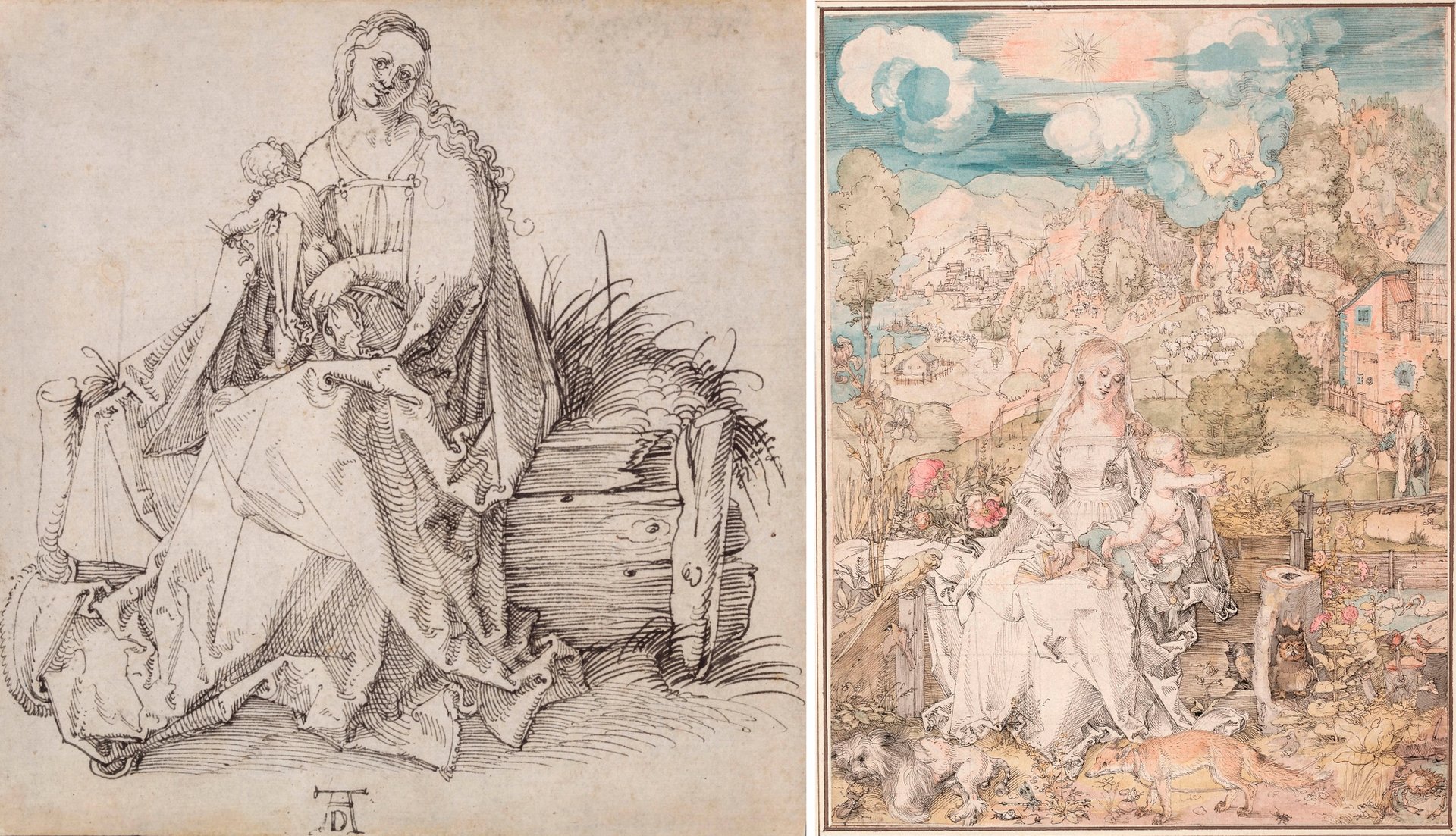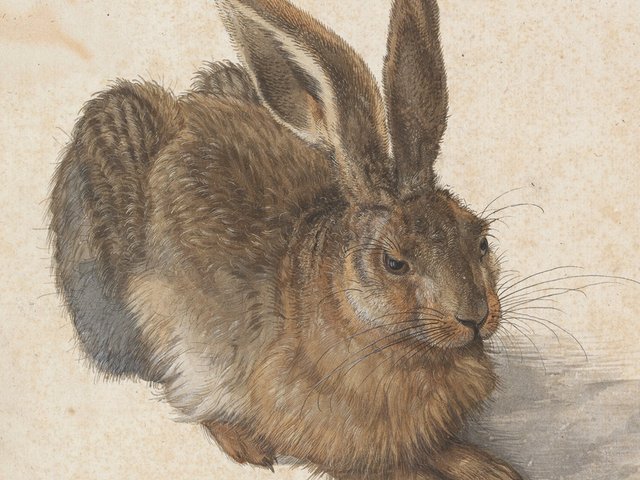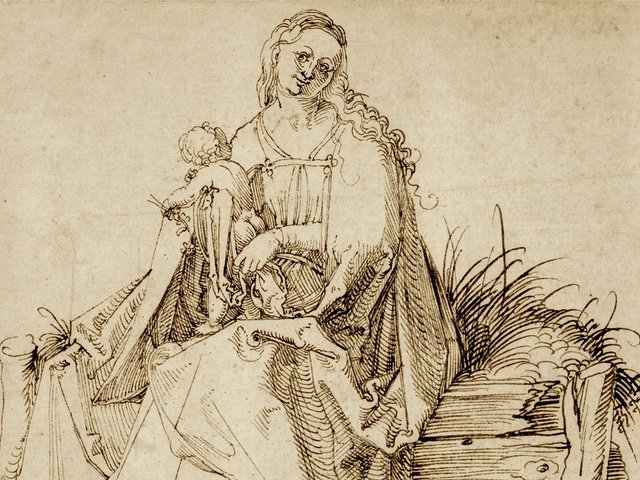A totally unknown drawing by Albrecht Dürer has been unveiled at Agnews Gallery in London. It was bought five years ago for just $30 in a house-clearance sale in the US—and the price now may be around $50m.
Clifford Schorer, a key Agnews shareholder and the person who made the discovery, believes that the drawing “could fetch a record price” for a work on paper by an Old Master. The current record is held by Raphael, whose Head of a Muse (1510-11) sold for $48m at Christie’s London in 2009. But Agnews has not fixed a firm price and is currently exploring interest.
The Virgin and Child with a Flower on a Grassy Bank (around 1503) had been in the collection of the architect Jean-Paul Carlhian, who lived in Concord, just outside of Boston. He died in 2012 and his widow Elizabeth died three years later. In a 2016 house sale the drawing had a price tag of $30.
Although the work includes a very prominent “AD” monogram (the most famous in art history), the Carlhian daughters did not believe it was authentic. One jokingly said to the buyer, “Oh, so you want the Dürer”.
The family believed it was a 20th-century reproduction, either of a Dürer drawing or a print (his original prints are highly collectable, often selling for tens of thousands of dollars).
A collector with credentials
The work appears to have been acquired by the Maison Carlhian company in 1919, probably as an original, and it then passed down the family. In retrospect, it seems astonishing that Jean-Paul and his daughters did not consider that the work might be authentic.
It was either the greatest forgery I have ever seen—or a masterpiece.”Clifford Schorer
Jean-Paul’s ancestors had run the successful antique furniture and decorative art gallery Maison Carlhian in Paris, for a time in association with the highly successful dealer Joseph Duveen. Jean-Paul studied at the Ecole des Beaux Arts in Paris and was a cultured man with a huge personal library. As an architect he worked on several museum buildings, including two for the Smithsonian Institution. With such a background, it seems incredible that Jean-Paul apparently failed to realise what was contained in the fine antique frame.
In 2019 Schorer was in Boston when by chance he heard about the drawing from a bookseller, Brainerd Phillipson, who put him in touch with the buyer. The $30 buyer made his living by buying modestly priced objects for resale at a profit. He thought little of the drawing, which was casually stored unframed in his dining area.
“It was an incredible moment when I saw the Dürer,” Schorer tells The Art Newspaper. “It was either the greatest forgery I have ever seen—or a masterpiece.” Schorer was offered the work for $500, but told the owner that they should both move cautiously.
The real deal?
When the research began the major breakthrough came after Jane McAusland, a paper conservator, found that the drawing had been made on paper watermarked with a trident, which was used by Dürer in over 200 surviving works. Importantly, it was also confirmed that the “AD” monogram had been added in the same ink as the drawing.
Christof Metzger, a curator at Vienna’s Albertina Museum and the organiser of its important 2019-20 Dürer exhibition, examined the drawing and pronounced it to be genuine. It has also been studied by Giulia Bartrum, a former curator at the British Museum’s prints and drawings department and a Dürer specialist. Dating the work to about 1503, both experts regard it as stylistically right. They believe it is a preliminary study for the magnificent watercolour The Virgin with a Multitude of Animals (around 1506, Albertina).
Dürer’s drawing depicts the Virgin, seated on an uncomfortable bench with grass growing on the sides. The Christ Child is shown from behind, in an unusual pose with his buttocks exposed. He holds a flower in his left hand, turning to look towards the Virgin.

Experts believe the rediscovered work (left) is a preliminary study for the watercolour The Virgin with a Multitude of Animals (around 1506, right), which is in the Albertina Museum collection in Vienna Courtesy of Agnews Gallery
So what is the provenance of the drawing? Although its early history remains uncertain, the Dürer work may well have been among pieces acquired by the Holy Roman Emperor Rudolf II in 1588. The drawing probably ended up in France in the 19th century, in the collection of Count Hubert de Pourtalès, who is known to have sold four other Dürer works to the Maison Carlhian in 1919.
Discoveries of totally unknown Dürer drawings are extremely rare. It seems likely that The Virgin and Child with a Flower on a Grassy Bank is the only example to have emerged since the 1970s.
The future of a masterpiece
And what has happened to the fortunate buyer who paid his $30? He is apparently a modest person, who does not want publicity, but his life is now considerably easier. Schorer arranged for him to receive proper legal advice. Already the buyer has been given a $100,000 advance—and will receive a further undisclosed amount when the Agnews sale is concluded.
With a price tag around $50m, a possible institution with the resources and interest to purchase the work would be the J. Paul Getty Museum in Los Angeles (which at Christie’s on 11 November paid $53m for Gustave Caillebotte’s Young Man at His Window, 1876). The Dürer would also fit well into the collection of New York’s Metropolitan Museum of Art, but fundraising would prove an enormous challenge. European museums are unlikely to be able to consider it at such a price. But most likely the Dürer will go to an extremely wealthy collector with a deep interest in Old Master drawings.
The Virgin and Child with a Flower on a Grassy Bank will be exhibited at Agnews in London from 20 November to 12 December. In a small display, Dürer and His Time, it will be shown alongside several related items, including the only surviving Dürer copperplate (on loan from the ducal collection in Gotha), for the portrait etching of Philip Melanchthon (1526). There will also be two paintings related to Dürer’s life and work: Jacob Cornelisz van Oostsanen’s Crucifixion (around 1507-10) and Christoph Amberger’s Portrait of Barbara Schwarz (around 1542). The Virgin and Child with a Flower on a Grassy Bank will then go on display in New York, at Colnaghi (20-30 January 2022).
• Find out more about the newly discovered work on this week's episode of The Week in Art podcast




